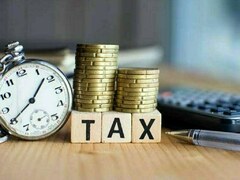Gas price rationalization is a big reform undertaken by the caretaker government in view of the fact that in the past successive political governments failed to implement it. Increases in prices of gas have remained inadequate since 2013-14, and that is the core reason behind the buildup of gas circular debt.
The good news is that with these pricing reforms, there would be zero buildup in the gas circular debt. The next in line is to deal with the stock of hardcore debt – the work is in progress, and soon some formula must be tabulated for it.
There is a method behind the price increase, which consists of two key features. First, price rationalization across the sectors will lead to more efficient utilization of gas molecules, and the other is that it shall reduce the disparity between industrial sectors across the country.
This shall be achieved by implementing a weighted average cost of gas for industrial sectors by fixing the price of natural gas, and the blended price based on estimated mix of RLNG. And overall revenues’ requirements are matched by a revenue-sharing formula between the two Sui gas companies through ‘cost of gas equalization agreement’.
The price for most domestic consumers is yet too low. These protected consumers are about 57 percent of consumers whereas the pipeline gas is being provided to 30 percent (mainly urban) of the country’s households. Rates are now progressive and top consumers are aligned with the LPG cost. Now there would be no cheap gas for urban elite to warm their swimming pools in winters.
And the natural gas reserves are declining at a CAGR of 5-7 percent and going forward, marginal domestic consumer will gradually move towards the alternate sources.
The biggest increase is in the commercial segment (by 2.4x to Rs 3,900/mmbtu) where the misusage was blatant – for example, there is a big Mall in Islamabad making electricity from commercial gas connection.
Many commercial consumers have been behaving with a sense of entitlement. With 30 percent of pipelined consumers, 51 percent are paying RLNG i.e., approximately 15 percent of commercial users in the country received cheap gas. Now, they would perhaps be better off moving towards LPG or grid-based electricity.
The increase for bulk of consumers is marginal –25 percent increase to Rs 2,000/mmbtu. Here, mainly housing societies receive this gas to produce their own power for its residents. The price should have increased higher; but that is not the case. And in case of tandoors, the low rate is maintained to ensure roti prices do not increase.
The price of fertilizer received a marginal increase and feed price is still lowest (barring protected domestic consumers) in the country.
There are two rationales for keeping prices low. One is for the farmer to receive Urea at affordable prices. Urea prices in Pakistan are less than half of the imported price, and any direct subsidy to farmer would be more challenging, given the poor governance structure in the country.
The experience of direct subsidy on DAP fertilizer was of abject failure. Without thinking through, a sudden increase in urea prices could create food security challenges in Pakistan. The other rationale is of low BTU gas whose usage is limited to a few sectors and its costs on Mari network is low too.
The most interesting and difficult pricing reform is reducing the disparity of the rate withing industries across jurisdictions – North players were paying much higher than the South. And within the South, the new connections’ rates were much higher than the old ones. For example, one Mall in Karachi which is getting low price gas due to its legacy connection, and exporters in Punjab were paying much higher than domestic market players producing candy and other stuff.
Going forward, there will be no discrimination between old and new connections. The natural (domestic) gas tariff is being set at Rs 2050/mmbtu for export — both captive and process.
Then the final price is computed based on some blending ratios which have been selected based on supply of natural gas and LNG in north and south, and at current PKR/USD parity and LNG rates. The blended cost is estimated at Rs 2200-2300 ($7.5-8/mmbtu) in South and Rs 2,610-2,760 ($9-9.5/mmbtu) in North.
Moreover, the tariff for natural gas is set at Rs 2,600/mmbtu for non-exporting sectors, and the estimated blended price is Rs 2,600 for South and Rs 3,340 for North.
The overall disparity between the pricing has been reduced, and there is an increase in price for South and a decline for North. A win-win solution has been found.
Going forward, ensuring timely revisions ineffective tariffs based on the increase in RLNG in the mix and its cost in PKR will be crucial.
A complex spreadsheet model is being developed by the ministry team, which has also come up with the negotiated pricing where full cost recovery is ensured to plug in the circular debt growth. Next in line is to deal with Rs1500bn-1600bn gas circular debt (excluding duplication of power sector and late payment surcharges). More on this later.
Copyright Business Recorder, 2023
Ali Khizar is the Head of Research at Business Recorder. His Twitter handle is @AliKhizar

























Comments
Comments are closed.